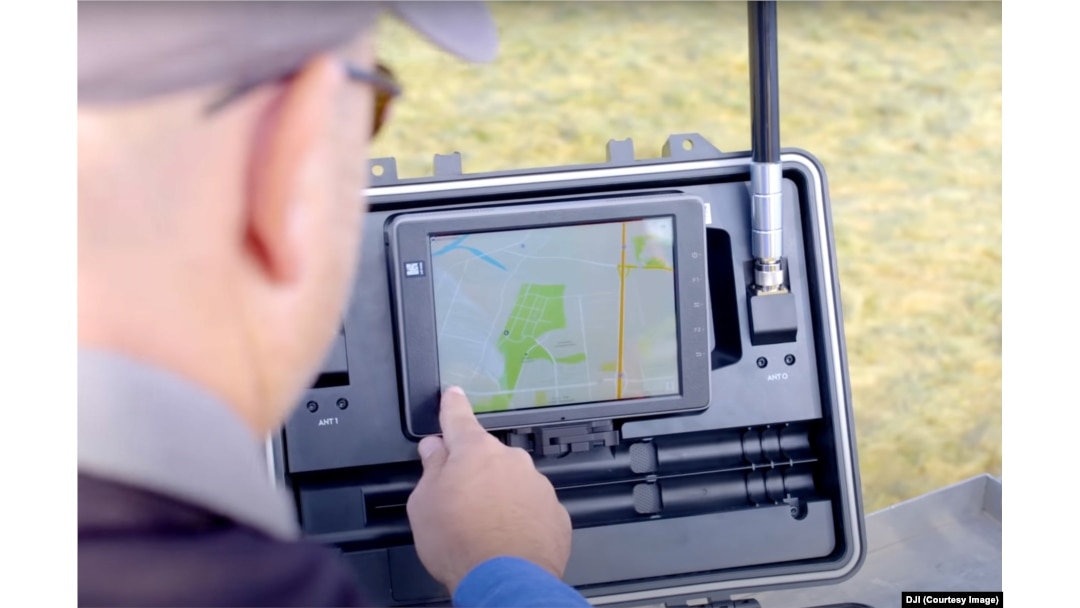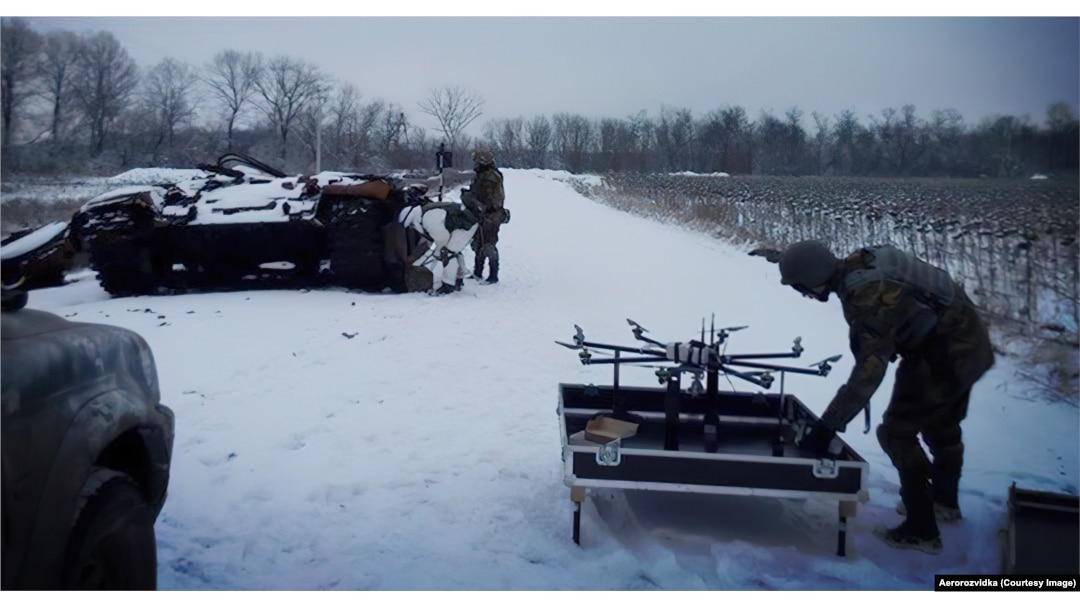Any unwitting drone enthusiast who flies their quadcopter near the front lines of the Ukraine conflict risks being immediately and accurately targeted with a barrage of artillery.
That’s thanks to a controversial piece of Chinese technology called AeroScope. The surveillance system is made by DJI, the world's preeminent drone producer, and is able to detect the flight path of most DJI-branded devices and pinpoint exactly where the drone’s operator is standing.
DJI say AeroScope is intended only for law enforcement uses, but Mykhaylo, a drone expert from Ukraine’s Aerorozvidka organization, confirmed to RFE/RL that “unfortunately, examples exist” of Ukrainians being targeted and killed by Russian users of the system.

An AeroScope device in use.
Aerorozvidka this week marks its eighth year of operation. The Ukrainian organization began as a group of drone enthusiasts who saw the potential for quadcopter technology in warfare. Today, the group works closely with the Ukrainian military and is widely viewed as a key factor in Ukraine’s war effort. Its co-founder was killed in 2015 while on a reconnaissance mission in the Donbas.

An Aerorozvidka drone team with an R18 octocopter. The eight arms of an octocopter mean that even if one rotor fails or is destroyed by a bullet the aircraft can return to base safely.
Mykhaylo, who asked that his surname not be used in this story, says Aerorozvidka has had a “significant” impact on Ukraine’s war efforts, citing the role of one team of drone operators who reportedly sped toward the front lines around the Ukrainian capital at the opening of the February invasion on quad bikes and used drone-dropped bombs to pick off Russian vehicles.
“We played a very important role in the Kyiv operation,” he says.
A Ukrainian R18 drone filmed dropping a modified RKG grenade.
Mykhaylo says it was largely because of AeroScope, the Chinese tracking technology in use by Russian forces, that Aerorozvidka developed its own drones capable of evading the DJI sensor.
A Ukrainian-made octocopter called the R18 first flew in 2019 and has been able to destroy Russian targets worth millions of dollars by dropping explosives weighing up to 5 kilograms. The R18’s specifications, including a range of up to 4 kilometers, rivals the best drones on the market and is designed for total visual stealth in darkness.
An R18 drone with munitions.
Unlike most consumer drones, the R18's designers saved weight by deleting landing legs, meaning the drone needs to take off from a special platform, then be “caught” midair by someone on the ground after its mission is completed.
The R18 also differs from consumer drones in its use of thermal-imaging cameras, which give a relatively low-resolution black-and-white image.
“The advantage is, we can fly in the night,” Mykhaylo says, when the thermal signatures of people and machines are more distinct than during warm summer days and the drone can't be targeted by small-arms fire.
Russian fighters, Mykhaylo says, "are afraid of our visits, but they are even more afraid of us in the night when they have no possibility to see our drones, only listen.”
Explosions of Russian military vehicles filmed by an Aerorozvidka drone.
Russia's radio-jamming devices are considered among the best in the world, and the front lines of Ukraine are described as a constant game of cat and mouse -- or "radio-electronic wrestling" -- between drone operators and radio jamming specialists.
Mykhaylo says there are various "life hacks" employed by Ukrainian drone pilots to evade detection on bombing and reconnaissance missions. He is unwilling to discuss those tactics in detail, but some drone pilots have talked about the importance of extremely low-level flying toward a target to avoid detection from radar systems.
A DJI-branded drone that was hit with gunfire during a mission in Ukraine.
Ukraine's early start on homegrown octocopter technology appears to be a prescient move. In March, DJI responded to complaints from a Ukrainian government official about the use of their products by Russian soldiers by calling the use of their drones in warfare "inappropriate." Then, in April, the company announced it was halting sales in both Russia and Ukraine.
A spokesperson told Reuters that "DJI abhors any use of our drones to cause harm, and we are temporarily suspending sales in these countries in order to help ensure no one uses our drones in combat."


